Cell Specialisation
Now we have established the general features of both animal and plant cells we must also remember that many cells do look different and this is because they have their own special jobs to do. These cells display specialised features that make them suited to carry out their specific function.
Cell Specialisation – Animals
Red Blood Cell

Specific Function:
Contain haemoglobin which transports oxygen to other cells and around the body.
Contain haemoglobin which transports oxygen to other cells and around the body.
Specialised Feature:
- Have biconcave shape for maximum surface area to allow more oxygen to be absorbed efficiently.
- Biconcave shape also allows for a flexible framework which means cells can squeeze through the thinnest of capillaries.
- Cells have a thin outer membrane allowing oxygen to diffuse through easily.
- Have no nucleus so there is more room for oxygen to be carried in the cell and hence around the body.
Sperm Cell
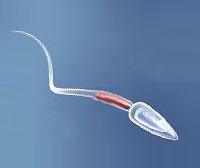
Specific Function:
To fertilise the ovum (female egg cell).
Specialised Feature:
- The tail of the sperm cell enables it to swim to the ovum and fertilise it.
- The head is streamlined also to aid swimming
- The head contains genetic information and a nucleus and has an enzyme to help penetrate the egg cell membrane to allow fertilisation.
- The middle section immediately behind the head is packed with mitochondria to provide energy.
Nerve Cell
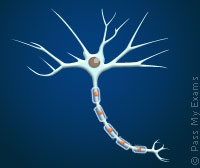
[Motor Nerve Cell]
Specific Function:
Transmit electrical nerve impulses and so carry information from one part of the body to another ie from receptor to an effector.
Transmit electrical nerve impulses and so carry information from one part of the body to another ie from receptor to an effector.
Specialised Feature:
- Dendrites extend from the cell body to make connections with other neurones.
- Have a long axon (nerve fibre) to carry the impulse to the target organ.
- End plate forms a synapse with an effector (a muscle or a gland).
Cell Specialisation – Plants
Xylem Cell
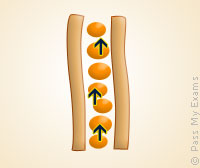
Specific Function:
Small tubes that carry water from the roots to the leaves.
Small tubes that carry water from the roots to the leaves.
Specialised Feature
- Long and tube-like hollow vessels to carry the water.
- Cells have no end walls between them so they form a 'pipeline' to carry the water.
- Spirals and rings of lignin in the cell walls strengthen them to withstand pressure of water.
Root Hair Cell
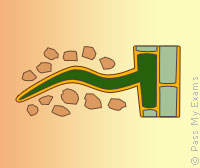
Specific Function:
Absorb water and mineral ions from the soil.
Absorb water and mineral ions from the soil.
Specialised Feature
- Located in the root epidermis and in direct contact with the soil
- Thin walls make up-take of water easier.
- Wall nearest the soil has a long 'finger-like' projection with very thin walls into the soil. This projection increases the surface area for more efficient uptake of water and ions.
Leaf Palisade Cell
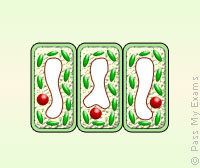
Specific Function:
Carries out photosynthesis.
Carries out photosynthesis.
Specialised Feature
- Packed with chloroplasts which contain the light absorbing pigment chlorophyll.
- Regular shaped closely packed cells forming a continuous layer for efficient and maximum absorption of sunlight.
